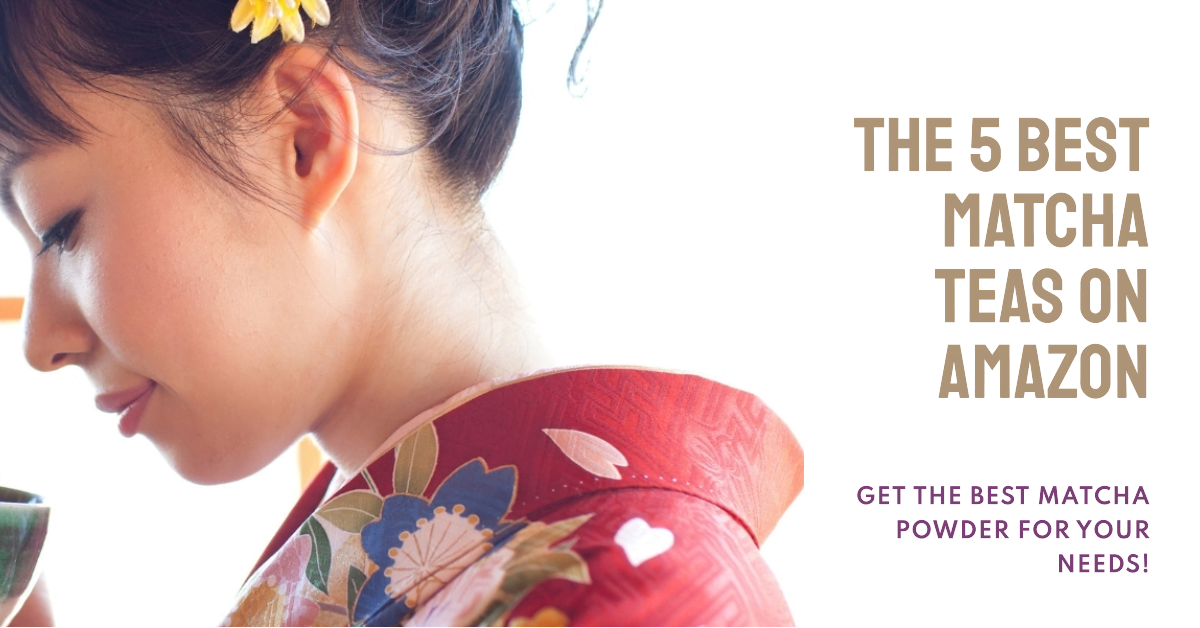Introduction
Matcha, a delicate and flavorful green tea, has gained enormous popularity over the past few years. A key factor that sets matcha apart from other teas is the grade of the leaves. Depending on the grade, the quality of the matcha and its taste can vary greatly. But what exactly is the difference between the various grades of matcha?
And more importantly, how can you differentiate the quality of matcha based on the different grades? In this article, we will discuss the matcha grading system in Japan, the labels used overseas, and the criteria to assess the quality of matcha.
Matcha Grades in Japan
Matcha green tea is a highly prized form of tea native to Japan and is graded based on its color and flavor. In Japan, the grades of matcha you will find in stores are typically divided into two categories: culinary and ceremonial.
Culinary grade matcha is the lower quality, more affordable grade of matcha. It is a bright green color and has a relatively strong taste. This type of matcha is often used in cooking, baking, and latte-making, as it is not of high enough quality to be served on its own or in traditional tea ceremonies.
Ceremonial grade matcha, on the other hand, is a much higher quality tea. It has a deep green color and a light, sweet flavor. It can be enjoyed as a hot or cold beverage on its own or used for tea ceremonies and other traditional Japanese rituals. This type of matcha is the highest quality tea available and has much higher prices to match.
When matcha is graded in Japan, factors such as the size of the leaf, degree of shading, soil fertility, and so on are taken into account.
Different tea producers also have their own set of grading criteria and standards. In general, the larger and more uniform the leaves are, the higher the grade of the matcha.
In addition, matcha that has been shaded longer will have a more intense flavor and a deeper green color and thus will be of higher quality. Price will also be indicative of quality – higher grade matcha has a higher price tag.
In Japan, there are two primary grades of matcha. These are usucha (thin tea) and koicha (thick tea). Usucha is higher in caffeine and has a lighter, more delicate flavor and color
Koicha has a much more intense flavor and color and is lower in caffeine. Both grades can be used for tea ceremonies, but usucha is the more commonly used grade.
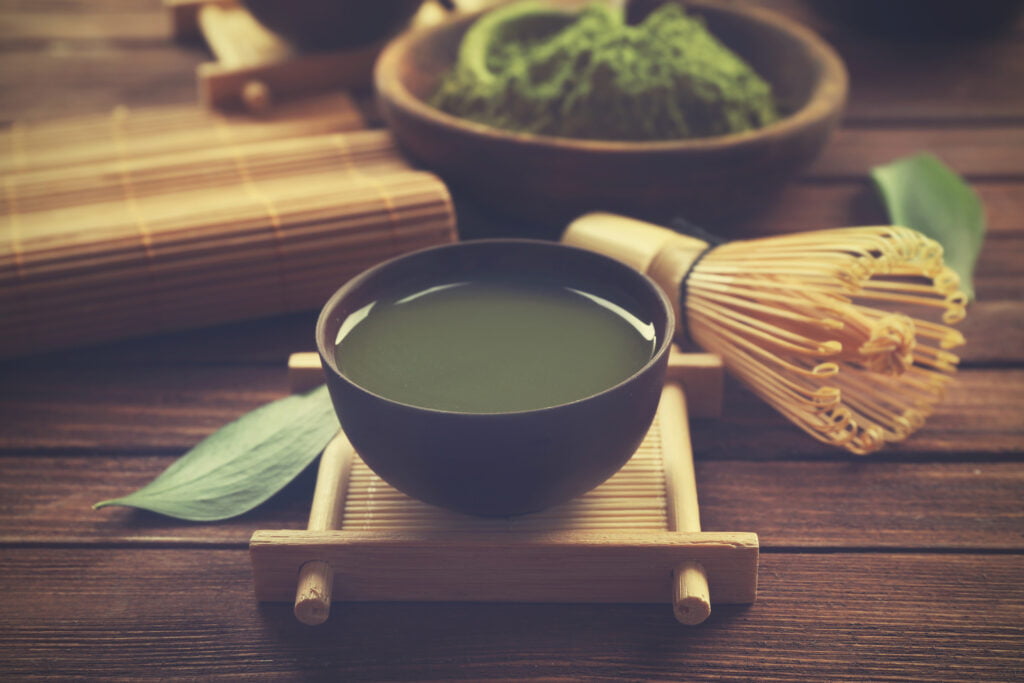
Overseas Matcha Grading System
Matcha grading systems in Japan are not always consistent with other countries. In Japan, the grading system generally applies to Japanese Matcha, which is considered of higher quality than overseas Matcha. Overseas Matcha is usually graded according to the following system:
- Grade A: This is the highest grade Matcha available overseas and is sometimes referred to as a Ceremonial grade. It is made from the finest quality Matcha leaves, smooth, bright green in hue, and has a strong umami flavor. Grade A is the type of Matcha used in traditional tea ceremonies, and its vibrant green color makes it a great choice for lattes and desserts.
- Grade B: This middle-grade Matcha is lower in price than Grade A and has a more muted green hue. It is the type of Matcha used in most teas and can be used in baking, cooking, and lattes.
- Grade C: This is the least expensive grade of Matcha and is generally used for cooking and baking. It has a duller green hue and a milder flavor.
These three grades of Matcha are generally produced in different locations around the world and are evaluated according to their quality and flavor. Grade A is typically available from Japan and is the best quality overseas Matcha. Grade B is sometimes available from China and other countries and is slightly lower in quality than Grade A but still contains a high level of antioxidants. Grade C is the least expensive and is typically found in supermarkets or health food stores.
Although the grading system for Matcha varies between regions, the grades of Matcha used in traditional Japanese tea ceremonies are always the same. Regardless of the region, Grade A Matcha should be sought out for its superior taste and color.
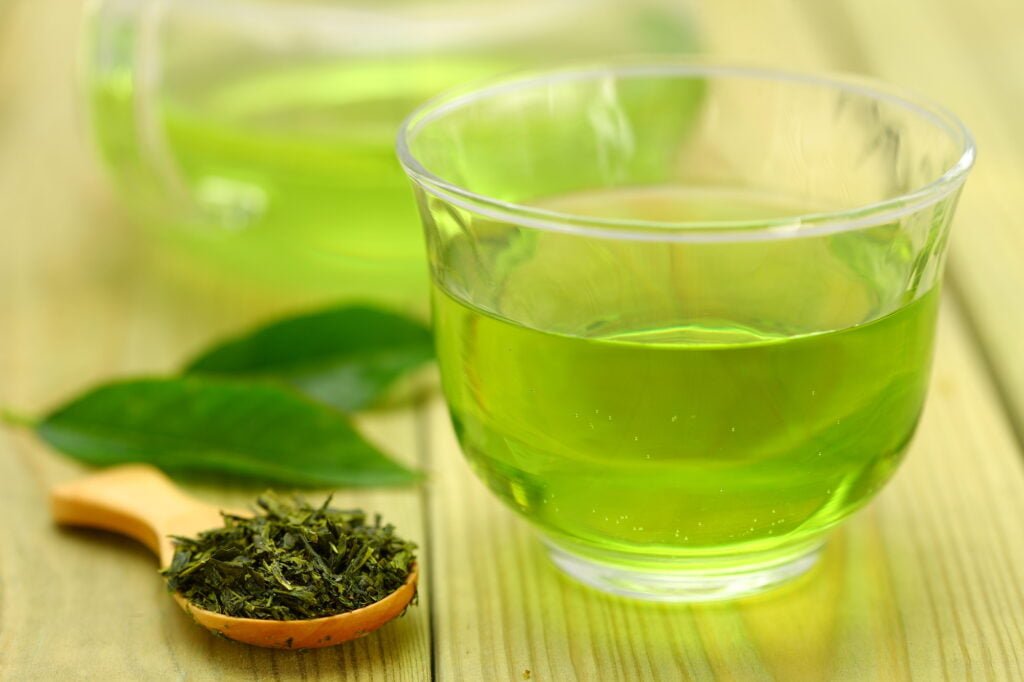
Factors Indicating Matcha Quality
Matcha grades are an important indicator of quality and can tell you a lot about the flavor, texture, and overall experience of drinking or cooking with it. Knowing how to properly identify and assess the quality of matcha grades can help you enjoy the most out of this tea.
The main factors indicating matcha quality include the kind of tea bush used, the harvest season, the processing method, and the container used for storage.
- First, the kind of tea bush used plays an important role in matcha’s taste, texture, and overall experience. Tea bushes are divided into two main categories, Samidori and Yabukita. The Samidori plants produce a strong and rich flavor, while the Yabukita plants have a sweeter, mellower flavor.
- Second, the time of year when tea leaves are harvested is also important. Generally, the season’s first harvest is considered the best due to having the freshest leaves. Teas harvested after the first harvest often have less intense flavors and may be of lower quality.
- Third, the method of processing has an impact on the flavor, texture, and overall quality of the tea. Typically, matcha is stone-ground for a few hours, which gives it a smoother texture and a fuller flavor. It is important to note that there are some teas that are processed using a method called “Dashi-iri-mizu”, which produces a smoother and more intensely flavorful tea.
Finally, the way the matcha is stored also affects its quality. Matcha should be kept in a cool, dry place and should always be stored in an airtight container. It should be consumed within one to two weeks after purchase for best results.
In conclusion, the quality of matcha is influenced by various factors, including the kind of tea bush used, the season of harvest, the method of processing, and the container used for storage. By considering these factors, you can ensure that you are getting the best-tasting and highest-quality matcha.
Superior Ceremonial Matcha or Organic Ceremonial Matcha
When it comes to the highest grade of Matcha tea, there is a distinction between Superior Ceremonial Matcha and Organic Ceremonial Matcha. The main differences between the two are the leaves used and the price.
Superior Ceremonial Matcha is made from the youngest and most tender leaves, which gives it a light green color and a distinctively sweet taste. This type of Matcha is also significantly more expensive than Organic Matcha, as it is produced in much smaller quantities.
Organic Ceremonial Matcha, on the other hand, is made from mature leaves, which gives it a darker green color and a fuller flavor. It is grown organically on Japanese tea farms and contains a higher concentration of nutrients and antioxidants than the Superior variety. This type of Matcha is also more affordable than Superior Matcha.
Ultimately, the type of Matcha that is best for you depends on your budget and personal taste. Both grades of Matcha have their own unique benefits and flavors, but if you are looking for sweeter, lighter Matcha tea, then Superior Ceremonial Matcha may be the best choice.
Culinary Grade Matcha
Culinary Grade Matchas the most commonly used type of matcha in teas, lattes, and baking. It is made from the second harvest of Gyokuro green tea bushes, harvested and produced for use in cooking and baking.
The leaves are then shade grown for 20 days before being steamed, dried, carefully sorted, and hand selected for color, flavor, and texture. As such, this type of matcha is of a medium grade and is not considered to be of the same quality and flavor as ceremonial-grade matcha.
Culinary-grade matcha is still a nutrient-rich and antioxidant tea but is not ideal for drinking on its own as it lacks the delicate flavor, sweetness, and vibrancy of ceremonial-grade matcha. It is more suitable for adding to recipes, including smoothies and ice cream.
Criteria to Assess the Quality of Matcha
Matcha is an incredibly versatile ingredient, with grades and qualities that range from ceremonial to culinary. As with most food ingredients, matcha’s quality can significantly impact taste, aroma, and finish. When selecting matcha, it is important to understand the criteria and factors used to assess the quality and grade of matcha.
To determine the quality of matcha, several factors are taken into consideration.
Color is the first factor that should be considered, as it can indicate the freshness of the tea leaves. The higher grades of matcha tend to be deeper and brighter in color, while lower-grade matcha may appear dull and faded. Additionally, the color refers to the vibrancy.
The next factor to consider is chemical composition. Higher-grade matcha typically contains higher levels of catechin, the antioxidants found in green tea. Catechins offer health benefits and also play a role in the taste and aroma of matcha.
Next, one should consider the texture of the matcha. Culinary grade matcha has a much coarser texture than ceremonial grade, which is powdery and fine. The texture of matcha can also influence its taste and aroma.
Finally, the flavor of the matcha should be taken into consideration. Higher-grade matcha is typically more full-bodied, with a rich and robust flavor, while lower-grade matcha may be more mild and subtle.
By taking into account these criteria and factors, one can better understand the quality of the matcha they are selecting. For those seeking the highest quality and most authentic matcha experience, it is essential to understand the criteria used to assess the quality and grade.
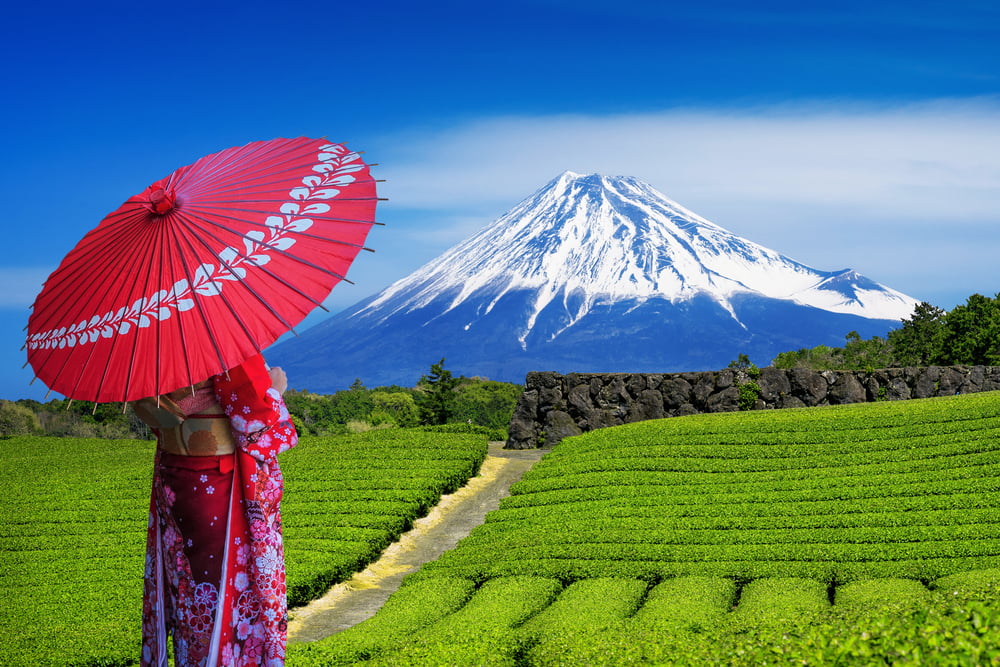
Where was The Matcha Produced?
Matcha is a type of green tea that is grown and produced in Japan. It is an important part of the traditional Japanese tea ceremony and is renowned for its unique flavor and health benefits. Matcha is unique among other types of green tea due to its processing and grading methods. Matcha is made from high-quality tea leaves that are shaded from the sun for the last few weeks of their growth. This process increases the chlorophyll content and amino acid levels, resulting in a sweet, strong flavor and a vibrant green color. The leaves are then stone-ground into a fine powder. Matcha can be classified into different grades depending on the quality of the leaves used and the processing techniques.
Was The Matcha Grown Organically?
When buying matcha, it is important to know whether or not the tea was grown organically. Organic farming practices are healthier for the environment and can produce higher-quality matcha. Organic farming methods also protect the land from chemical runoff and synthetic fertilizers. To ensure your matcha is organic, look for labels that clearly state the product is certified organic. Additionally, you can ask the seller if their matcha is grown using organic methods. By knowing whether the matcha was grown organically, you can make an informed decision when purchasing matcha grades.
What Is Matcha Color?
Matcha can range from a bright green to a more muted, brownish-green color. The color of the Matcha is indicative of its grade and quality.
Generally, the higher grades of Matcha are a vibrant, deep green color, while the lower grades tend to have a duller, more muted green color. The color of Matcha can also vary depending on the harvest and the processing methods used.
In general, the color of your matcha should be bright and consistent.
What is The Matcha’s Aroma?
Matcha has a distinctive aroma that can be described as grassy and umami. This unique smell is due to the high chlorophyll content of the tea leaves and the preparation process, which includes the stone milling of the leaves to a fine powder.
The higher grades of matcha are said to be smoother and more mellow in flavor, making them more desirable for consumption.
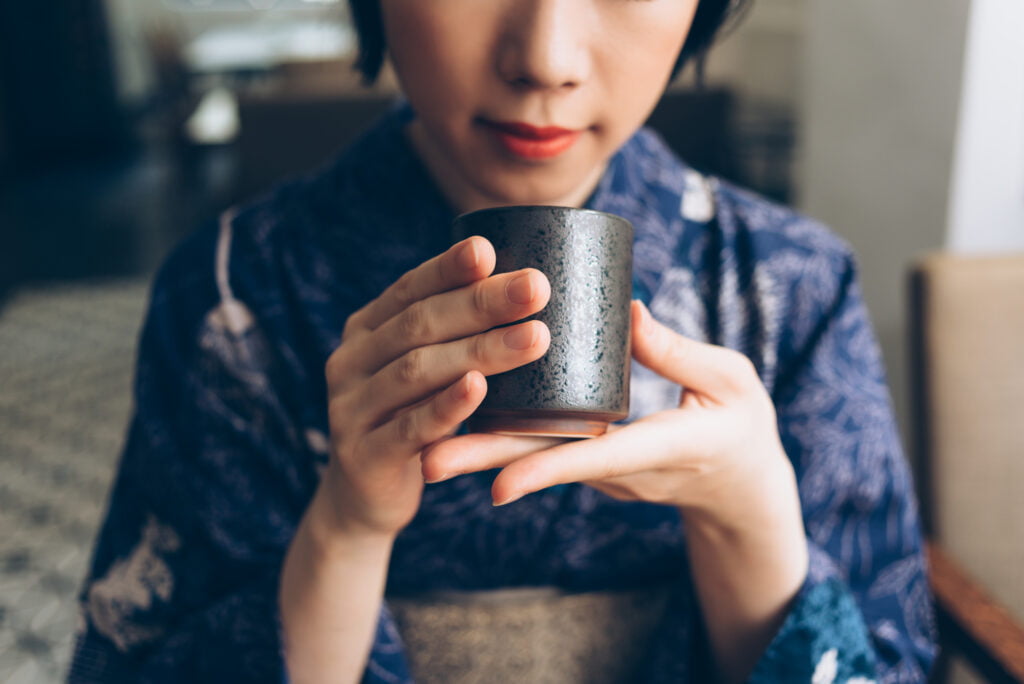
What Is The Matcha Taste?
Matcha is known for its distinct flavor and bright green color. Depending on the grade, the taste of matcha can vary from mild and sweet to grassy and bitter.
The higher grades of matcha, such as ceremonial or culinary, tend to have a sweeter and more delicate flavor, while the lower grades will be more bitter and astringent in taste.
The taste of matcha is also impacted by the quality of the leaves and the length of time they were steamed. When brewed correctly, matcha should have a full-bodied flavor profile that is both sweet and bitter at the same time.
What is The Matcha Texture?
The texture of matcha powder varies depending on the grade. The texture of lower-grade matcha powder is coarse, while higher-grade matcha powder is finely ground and composed of smaller particles.
Higher-grade matcha powder should feel smooth and creamy without any grainy or rough texture. This is because higher-grade matcha powder has removed the stems and veins of the tea leaves.
Lower-grade matcha powder includes the stems and veins of the tea leaves, which can make it more coarse and rough.
Overall, the texture of matcha powder can vary greatly, and choosing the right grade for your needs is important.
Conclusion
There are many factors to consider when choosing matcha. It is important to consider the different grades of Matcha along with the country and production process before making a purchase decision.
In addition, it is essential to assess the quality of the Matcha through color, aroma, taste, and texture. With so many factors to consider, it is clear why matcha brewing ceremonies have been so important throughout Japan’s history.
Whether you’re looking for a delicious everyday tea or an exceptional ceremonial grade matcha, knowing what you’re buying and why is important. With the right knowledge, you can be sure to always make the right choice when it comes to matcha.
Frequently Asked Questions
What are the grades of matcha?
Matcha is generally classified into two main grades – ceremonial and culinary. Ceremonial grade matcha is considered the highest quality, made from the youngest tea leaves, with stems and veins removed. Culinary-grade matcha is more affordable and suitable for cooking or blending into drinks.
What grade of matcha is better?
Ceremonial-grade matcha is considered better due to its smoother flavor, vibrant green color, and higher levels of antioxidants and amino acids.
What are the 4 types of matcha?
While matcha is broadly classified into ceremonial and culinary grades, it can be further categorized into four types – premium, cafe, ingredient, and kitchen grade. Premium grade is high-quality matcha, used for daily consumption; cafe grade is slightly lower in quality but suitable for lattes and smoothies; ingredient grade is ideal for recipes that require stronger flavor; and kitchen-grade is the most affordable option for cooking and baking.
Sources
- Weiss, D. J., & Anderton, C. R. (2003). Determination of catechins in matcha green tea by micellar electrokinetic chromatography. Journal of Chromatography A, 1011(1-2), 173-180. Link: https://doi.org/10.1016/S0021-9673(03)01133-6
This study analyzes the catechin content in matcha green tea and provides insights into the differences in quality and health benefits between various grades of matcha.
- Keiko, U., Shinsuke, M., Yuko, F., & Keiji, K. (2016). Improvement of the taste of green tea containing high levels of catechins. Food Science and Technology Research, 22(4), 525-531. Link: https://doi.org/10.3136/fstr.22.525
This research paper investigates the taste profile of different grades of matcha green tea, focusing on the relationship between catechin levels and taste, and provides information on how various grades of matcha are distinguished based on flavor.
- Horie, H., Ema, K., & Wakabayashi, K. (2018). The Relationship between Powdered Green Tea (Matcha) and the Physicochemical and Sensory Characteristics. Journal of the Japanese Society for Food Science and Technology, 65(1), 22-30. Link: https://doi.org/10.3136/nskkk.65.22
This study explores the physicochemical and sensory characteristics of various types of matcha, including factors such as color, aroma, and texture, which contribute to the differences in the quality and classification of matcha grades.
- About the Author
- Latest Posts






